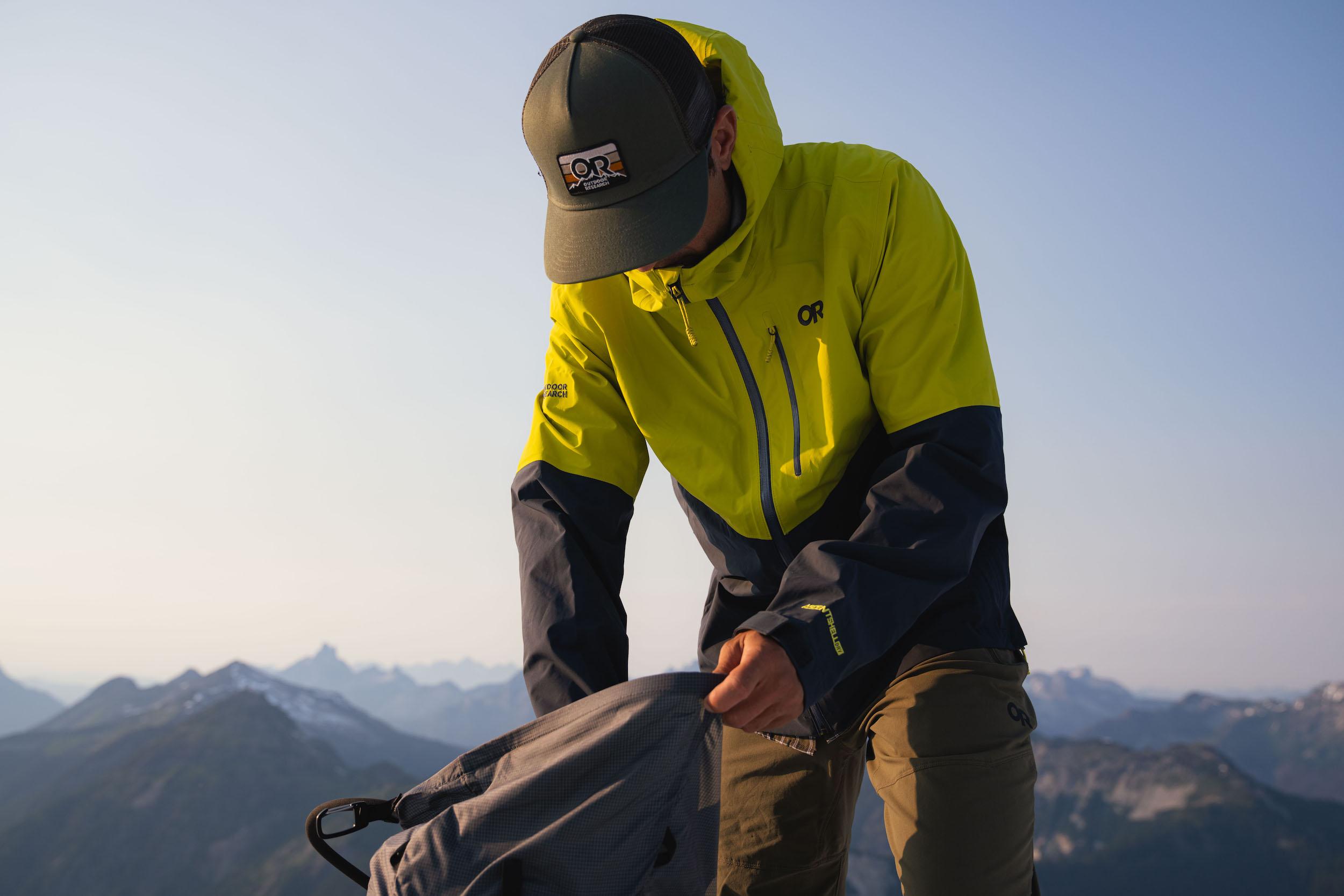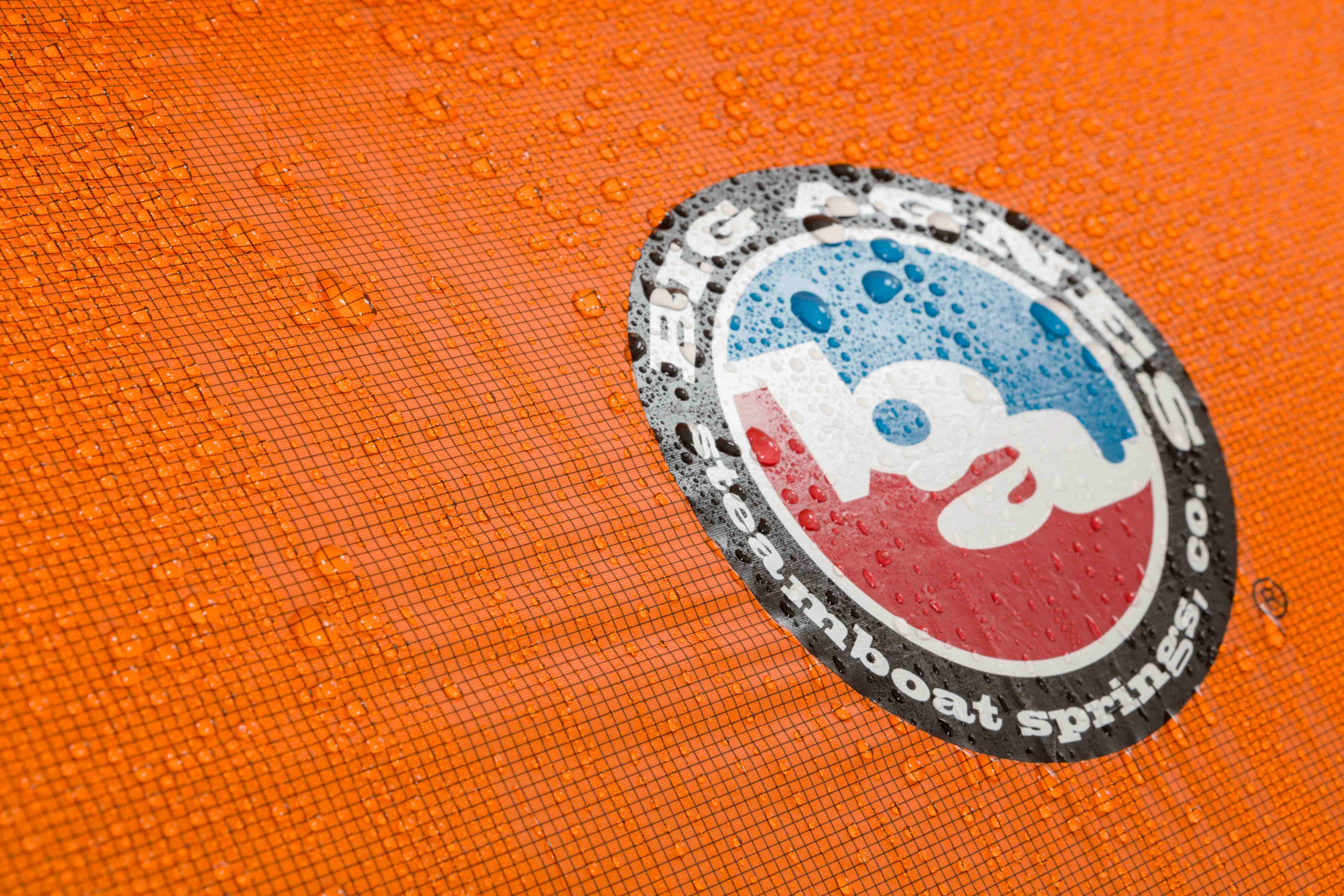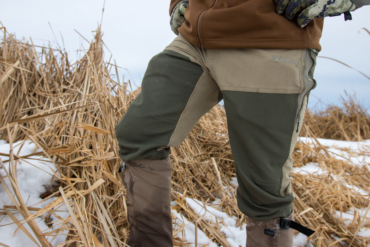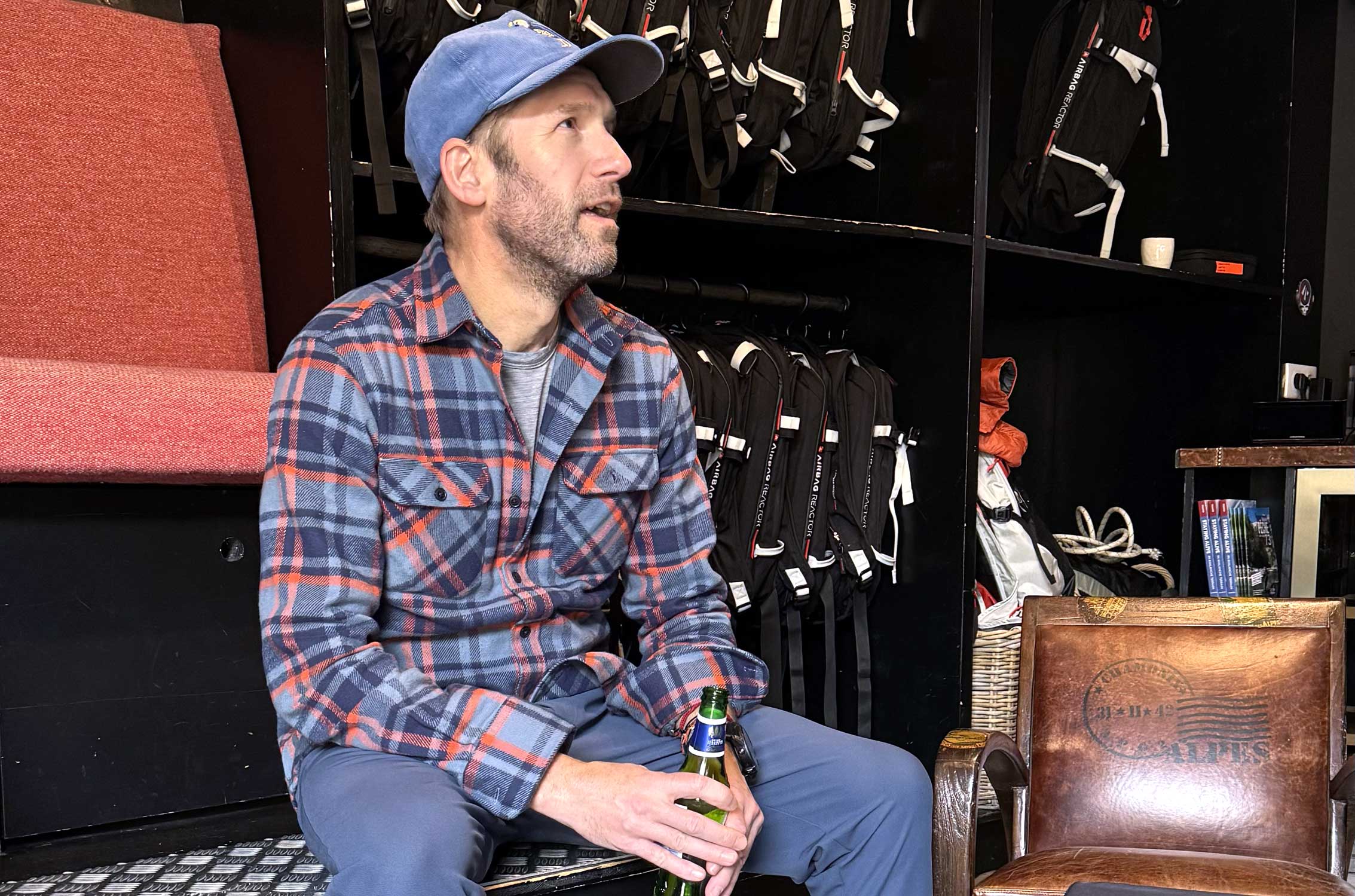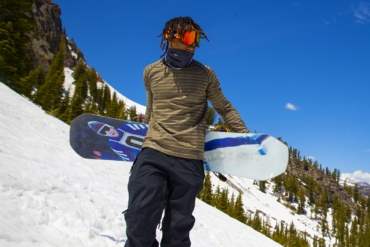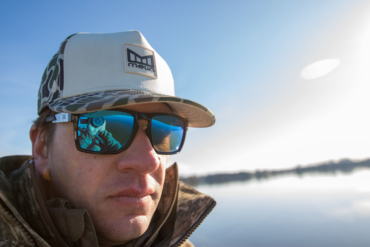Outdoor Research earned two industry firsts with its revamp of two bestselling rain jackets. First, it partnered with Nikwax for its first factory-applied, PFAS-free DWR coating on the Foray and Aspire 3L Rain Jacket line. Second, it won the first certification for carbon-neutral technical apparel from Climate Impact Partners.
In these updates, Outdoor Research claims this waterproofing system outperforms previous versions in both waterproofness and breathability, with significantly less environmental impact. That’s a big claim for an item currently ranked as GearJunkie’s best overall rain jacket! How does it accomplish that goal?
“These rain jackets are overall better for the environment, and ultimately for us,” said Alex Lauver, OR’s Senior Director of Materials, Innovation, and Sustainability. “The cons are you’re going to wash these jackets more. The pros are that jackets will last you longer and stay more effective with after-care products than previous models.”
GearJunkie has tested the new Foray 3L Jacket extensively through a rainy winter and spring in the Pacific Northwest, and we’re still impressed with the design — even more so now that the shell has been upgraded.
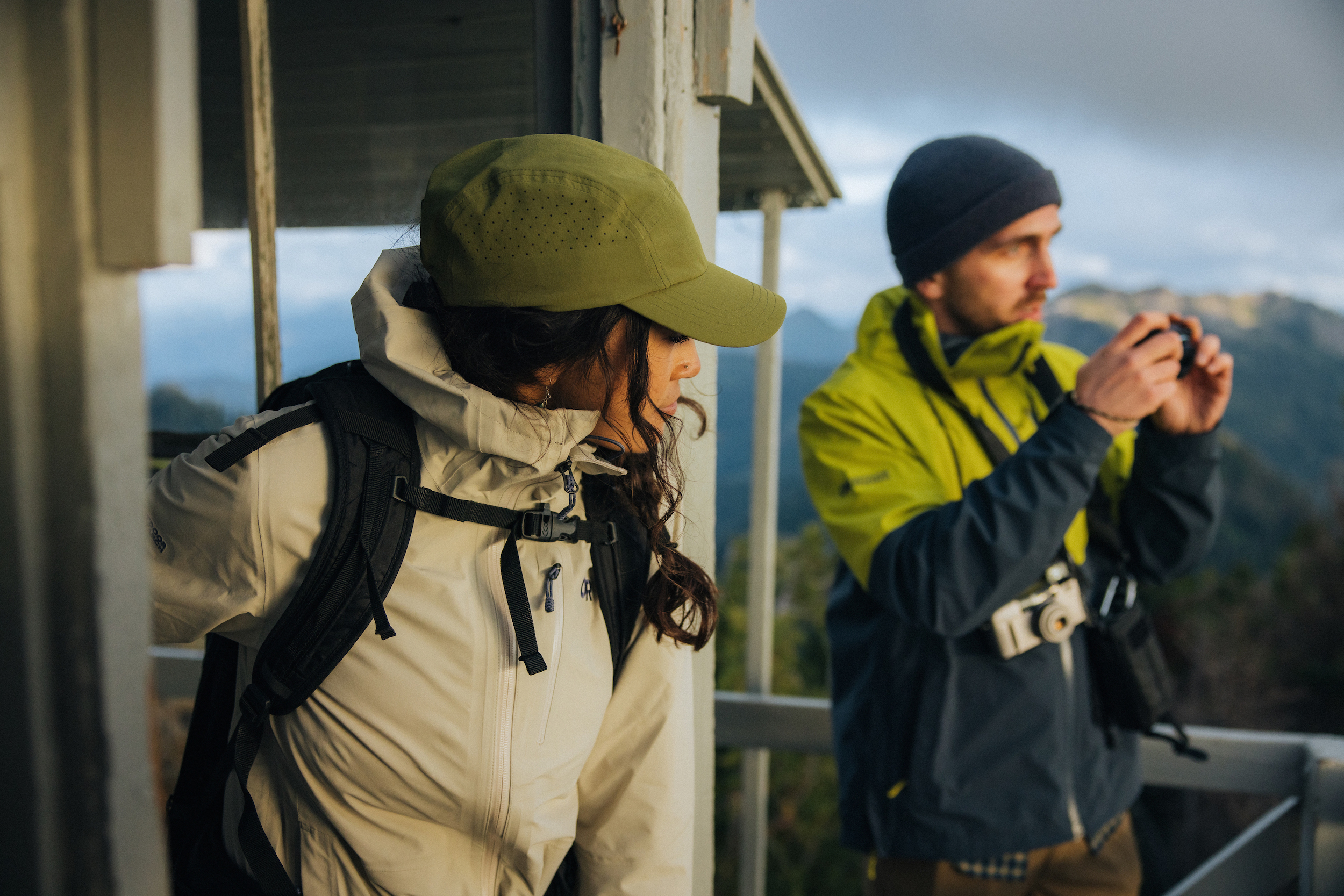
What Changed in the Foray and Aspire Rain Jackets?
In short, the fabric upgraded, but the design stayed. “We replaced an awesome product with an even more awesome product,” Lauver stated. “Now it’s massively sustainable.”
Previous models of OR’s bestselling rain jackets, the men’s Foray and women’s Aspire, used a. 2.5-layer construction. In previous models, it held GORE-TEX’s PACLITE membrane between nylon face fabric and a thin inner layer sat directly on the adventurer’s skin or baselayer.
Now it uses three layers: Nikwax’s Direct.Dry DWR coating covers the face, while a full layer of Outdoor Research’s AscentShell Dry membrane increases the breathability. “Breathability is the key to true waterproofness,” Lauver claims. “The face layer, when soaking wet, cannot allow moisture to escape from inside. Less moisture trapped means you stay dryer, period.”
Outdoor Research also conducted a full lifecycle assessment to measure the impact of producing a rain jacket all the way to that product’s recycling or ending up in a landfill. Based on that impact assessment, it was able to calculate how many tons of carbon dioxide it needed to offset to create the Foray and Aspire 3L line. After the assessment, Climate Impact Partners certified them as Carbon-Neutral.
Pros and Cons of PFAS-Free DWR
Some good news? The Nikwax treatment followed by washing with Nikwax after-care products lengthens the durability of the jacket and waterproofness for greater length of time. Plus, the process of creating Nikwax’s Dry.Direct formula is environmentally conscious and sustainable; PFAS DWR treatments are not.
The bad news? The beading of water will break down faster than standard PFAS-additive waterproofing. These previously standard DWR treatments didn’t require as many rounds in the washer. That’s because these treatment formulas prove similar to formulas used on nonstick cookware. Chemists designed it to bounce water and oil right off, but at the cost of toxic forever chemicals.
With the Nikwax Direct.Dry DWR treatment, when that face layer is soiled from everyday oils from your skin, sunscreen, or bug repellent, water collects more easily. This smothers the jacket’s breathability and makes you feel like your jacket is leaking.
In reality, the moisture inside of the jacket has no way to move up and out. That’s when you start to feel the moisture collecting.
Thus, the new model needs to be laundered more frequently with Nikwax wash. It’s a compromise, but should result in a longer-lasting jacket that doesn’t pollute, the brands claim.

Why PFAS Is a Big Deal — And What OR and Nikwax Are Doing About It
Outdoor Research claims that beginning in 2025, its line is 100% PFAS-free. Nikwax states it has never used PFAS in any products. These environmentally harmful and long-lasting chemicals have been standard in water-repellent materials for decades.
That chemistry is found in breathable membranes like the GORE-TEX PACLITE recipe that OR used previously. PFAS exposure can cause ailments like cancer or infertility.
“It’s actually not the athletes who are wearing these garments who are most affected. We’re looking out for the people who stand over machines all day long who are being exposed to these chemicals, or who spend 70 hours a week dumping plastic barrels into a machine. The human safety in apparel vastly differs from the end user’s experience in removing PFAS from textiles.”
PFAS-free clothing isn’t standard across the board just yet. PFAS can be found in even the tiniest details of clothing, like zippers, making this a textile industry-wide effort.

Why Nikwax?
Nikwax’s simple Direct.Dry DWR formula contains zero PFAS. It also achieved a 100 — the highest possible score — on the industry’s Spray Rating Test after initial application. OR and Nikwax say that testing this combination found that the materials proved waterproofed for longer after multiple rounds in a washing machine with Nikwax after-care products.
Lauver stated that Outdoor Research conducted interviews and testing with three other DWR creators, but ultimately aligned with Nikwax’s goals and product results. “At the end of 20 home washings,” he said, “we found that these jackets were just as effective as Day 1 with Nikwax after-care products.”
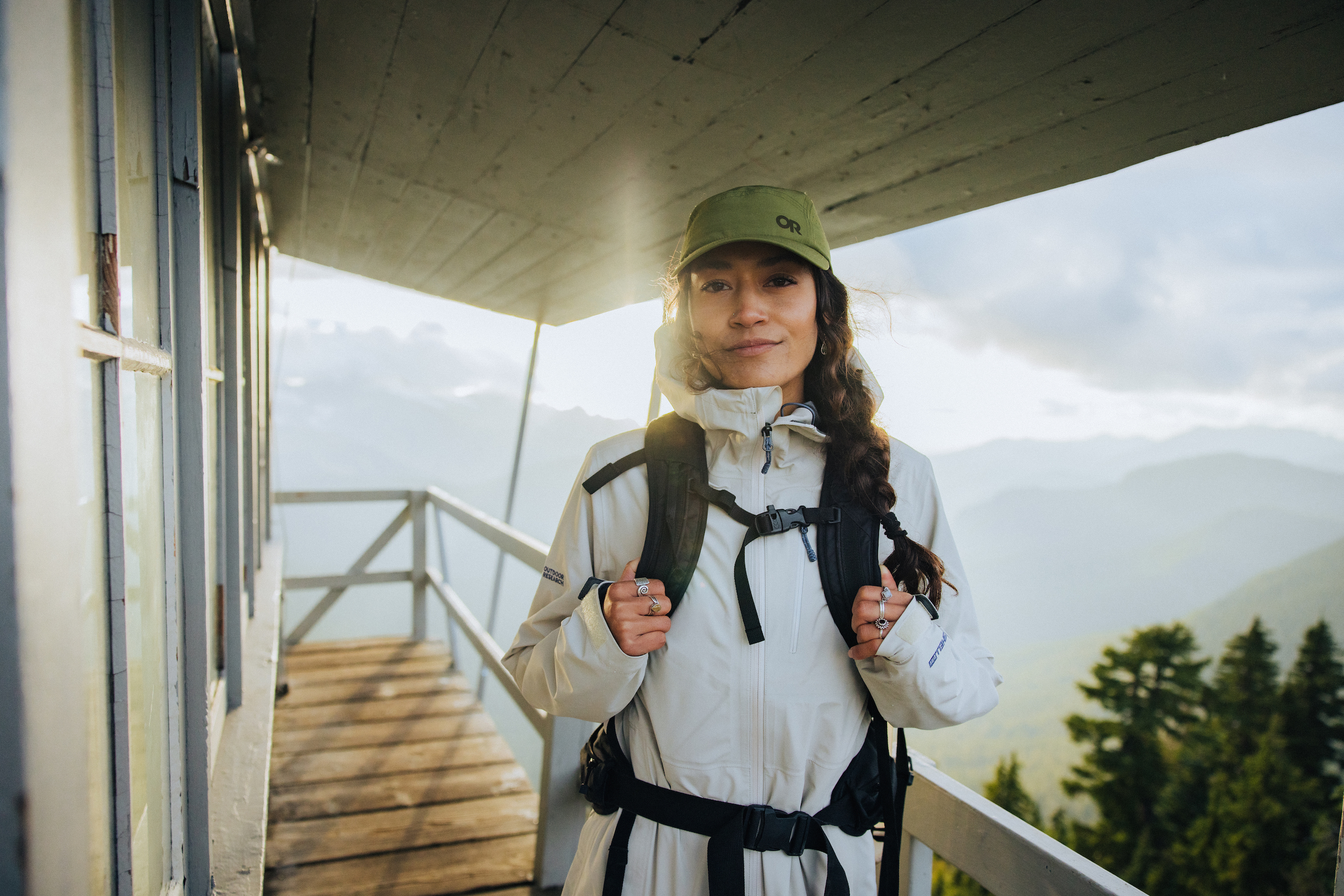
PFAS-Free Gains Traction
New York, California, and Minnesota passed legislation that as of January 2025, new manufactured garments must be free of intentionally added PFAS. Creating laws banning the addition of known PFAS materials helps the push by outdoor industry manufacturers to remove these chemicals and find environmentally sustainable solutions.
If the new Foray and Aspire measure up in real world testing, it’s indeed a step in the right direction.
